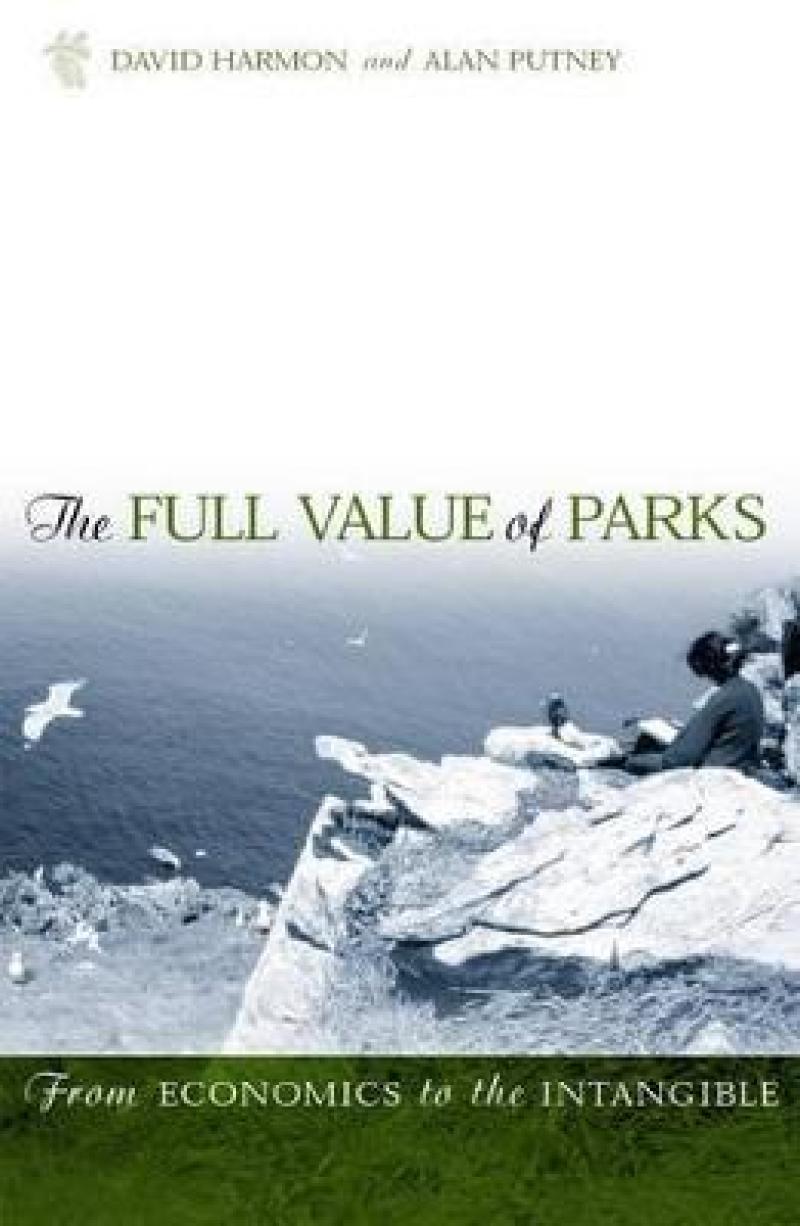The Full Value of Parks is the first comprehensive look at the values associated with parks and other kinds of protected areas. Much has been written about the importance of parks to the tourism industry, yet the reasons why people care deeply about them usually have little or nothing to do with money. Instead, people value parks as sacred sanctuaries and places of spiritual self-discovery, as settings of breathtaking beauty, as venues of scientific inquiry, as destinations for much-needed recreation-even as places where one can go to heal a wounded psyche. The profound attachment that people feel to the world's great natural areas and cultural sites arises from an incredibly diverse, complex, and sometimes conflicting array of values. After a thorough overview of the kinds of values found in parks, the unique challenges of managing parks to accommodate differing viewpoints are surveyed in this path-breaking book. Drawing on insights from a broad group of international experts, and offering examples from Siberia to tropical Africa, from the Andes to the Australian outback, The Full Value of Parks is an engaging and lucid exploration of the entire range of benefits and values of protected areas-from economics to the intangible.
Les mer
Parks are important economic vehicles, generating billions of dollars worldwide in tourism revenue. However, the reasons for that visitation are found in the non-material, non-economic values that parks offer to people.
Les mer
Chapter 1 1. Introduction: Perspectives on the Values of Protected Areas Chapter 2 2. The Source and Significance of Values in Protected Areas Chapter 3 3. Conserving the Sacred: The Protective Impulse and the Origins of Modern Protected Areas Chapter 4 4. Managing the Intangible Chapter 5 5. Recreational Values of Protected AreasJ Chapter 6 6. The Social Value of the Nyangkpe Sacred Forests of South West Province of Cameroon Chapter 7 7. The Cultural Values of Protected Areas Chapter 8 8. Life and the Nature of Life-in Parks Chapter 9 9. Aesthetic Values and Protected Areas: A Story of Symbol Preservation Chapter 10 10. National Parks as Scientific Benchmark Standards for the Biosphere; Or, How are You Going to Tell How it Used to Be, When There's Nothing Left to See? Chapter 11 11. Therapeutic Values of Parks and Protected Areas Chapter 12 12. Ishmael's Inclinations: Non-Use Values of Marine Protected Areas Chapter 13 13. National Parks versus Protected Landscapes? Legitimacy, Values, and the Management of the Colombian Tropical Wildlands Chapter 14 14. Biosphere Reserves: Tangible and Intangible Values Chapter 15 15. World Heritage Sites: Towards Linking the Tangible and the Intangible Chapter 16 16. Community-Conserved Biodiverse Areas: Lessons from South Asia Chapter 17 17. Strictly Protected Areas: The Russian System of Zapovedniks Chapter 18 18. Protected Landscapes in the Andean Context: Worshipping the Sacred in Nature and Culture Chapter 19 19. Parks as Battlegrounds: Managing Conflicting Values Chapter 20 20. Wilderness as Contested Ground Chapter 21 21. Battling Religions in Parks and Forest Reserves: Facing Religion in Conflicts over Protected Places Chapter 22 22. Wirikuta: The Wixarika/Huichol Sacred Natural Site in the Chihuahuan Desert, San Luis Potosi, Mexico Chapter 23 23. Intangible Values and Protected Areas: Towards a More Holistic Approach to Management
Les mer
Various perspectives on how to view, analyze, manage, and preserve parks and park-like protected lands are revealed in this book. U.S. experience plays a prominent part in this book, but does not dominate the material. The editors' selection of contributions reflects philosophies and experiences from the Americas, Africa, Asia, the Indian subcontinent, and Europe in 21 essays, plus the editors' introduction and synthesis. The book challenges the premise that science and economic principles are enough to preserve parks and similar areas from the pressures of development. This book will be a valuable addition to any library supporting ecology programs and a good resource for ecologists, economists, geographers, and others studying parks and protected lands. It certainly will become an anchor point for discussions in economics, religion, geography, ecology, and public policy. Highly recommended.
Les mer
· First comprehensive look at the entire range of values associated with parks
Produktdetaljer
ISBN
9780742527140
Publisert
2003-07-14
Utgiver
Vendor
Rowman & Littlefield Publishers
Vekt
576 gr
Høyde
235 mm
Bredde
156 mm
Dybde
26 mm
Aldersnivå
UU, UP, P, 05, 06
Språk
Product language
Engelsk
Format
Product format
Innbundet
Antall sider
360
Contributions by
